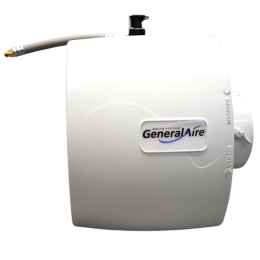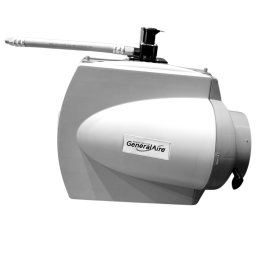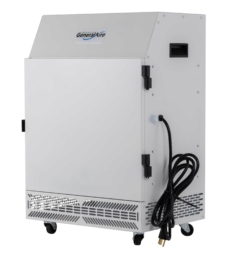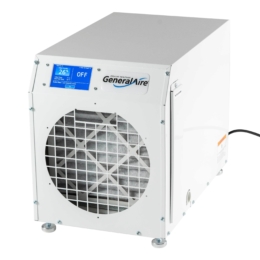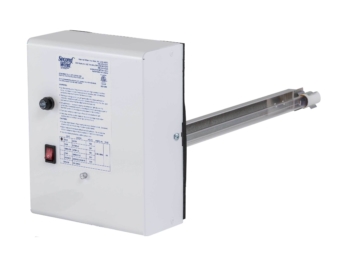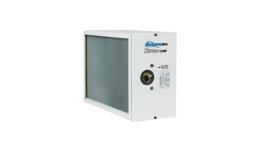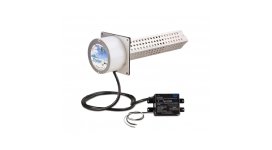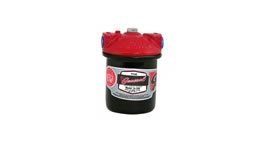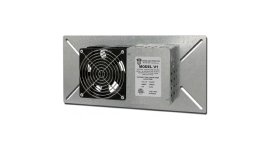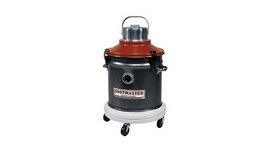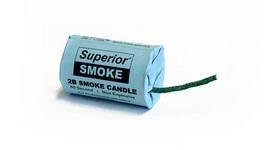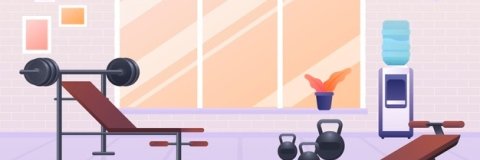Key Components affecting IAQ & Health
The 5 essential components that combine to ensure IAQ optimization, protect your home & the overall health of your family: Humidification/De-Humidification, Air Filtration, Air Purification using UV lights & proper Ventilation. GeneralAire® products work together to ensure harmful gas molecules, mold spores, bacteria/germs, VOC’s & microscopic particulates are reduced from your home, and the air your family breathes daily is clean, fresh and healthy. Use our Contractor Link to arrange a consultation with a qualified HVAC professional & take the first step towards breathing healthier™ today.
Product Categories
The air we breathe indoors is 2 to 5 times more polluted than the air we breathe outdoors!
The average person spends 90% of a 24-hour day indoors, ones's health could be at risk. Improper humidity levels, dangerous gas molecules, mold spores, germs, and microscopic particulates all affect our long- term health and comfort.
GeneralAire® has the answer to significantly reduce harmful airborne contaminants in the air we breathe. Install a GeneralAire® Humidifier, UVC Photocatalytic Air Purifier, HEPA Air Cleaner, and a MAC Series Air Cleaner for a complete indoor air quality system.

Frequently Asked Questions
For many reasons:
- Since the air in your home is always trying to reach its saturation point, it will absorb water wherever it can; from the bodies of you and your children, your pets, your furniture and even your house plants. As a result your skin, throat and nasal passages dry out, leaving you more susceptible to physical discomfort, colds, flu and even infection.
- Dry air causes dry, itchy skin.
- Dry air cracks expensive woodwork, floors, artwork and furnishings.
- Annoying static electricity (caused by dry air) can damage computers, VCR’s and other electronic equipment, requiring expensive repair.
- Dry air can cause harm to expensive musical instruments like pianos and violins.
- Dry air causes gaps in window & door frames, letting cold outdoor air in; causing you to turn up the heat and increasing your heating bills! Controlled humidity from the GeneralAire® Elite Steam Humidifier allows you the luxury of dialing the thermostat back & reducing annual heating bills. For example, 68° at 40% relative humidity feels just as warm as 74° at 20% humidity. Setting your thermostat back by as little as three degrees can reduce annual heating bills by as much as 5%.
A humidifier is a tool that helps you keep your home within your desired humidity level. If you keep your humidity levels within that range, you and your home are protected from the effects of having too little, or too much humidity.
Research shows that 40% – 60% relative humidity is ideal. Outside this range, your risk of being adversely affected increases.
We recommend contacting your local certified HVAC contractor, as they will be able to make recommendations for your home based on its age, size & construction. Overall, you can begin to understand which model might be best for your home using the following:
First, determine how much humidification your home needs, known as Gallons Per Day (GPD):
Use the 3-step formula below
Step One
- Calculate the Total Cubic Feet of Home
- Total Home Square Footage
- X Average Ceiling Height
Step Two
- Calculate the Load (lbs/hr)
- Total Cubic Feet X Desired Condition Factor (Table Below)
- X 1.05 for Each Fireplace
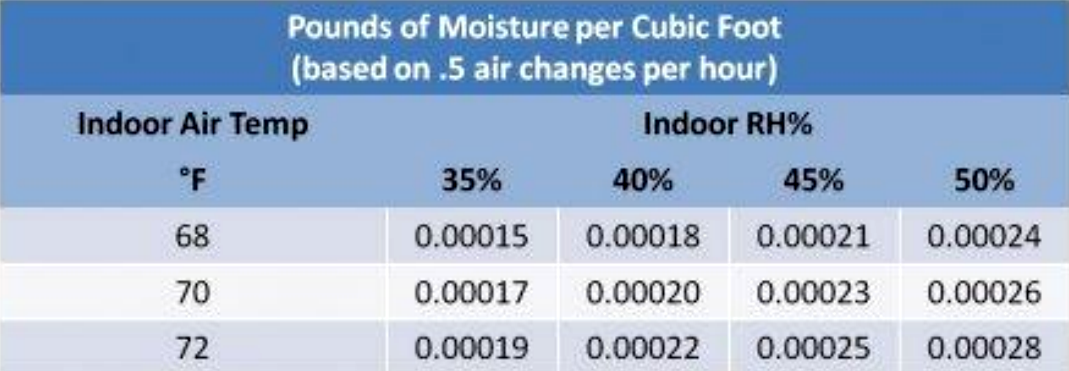
Structures Are Not Equal: Windows, Walls, Celling, Roof
Step Three
- Calculate Gallons Per Day (GPD)
- Gallons Per Day = Load (lbs/hr) X 2.88
Then, Select Your Unit
Once you have calculated your gallons per day you can then find models that are designed to process that amount of water / accommodate your size of home.
Keep in mind these numbers can vary based on numerous factors, including home construction, the presence and amount of woodwork, if you have a humidor or wine cellar, the presence of fireplaces, the number of floors and more. Work closely with a licensed contractor to determine the best selection for your home.
- Steam Model 5500=15 GPD (115V) or 29.5 GPD (230V) up to 5,500 Sq. Ft.
The following flow through models Gallons Per Day ratings are based on 120° plenum temperature.
- Evaporative Models 3200A & 3200M = 12 GPD / Up to 3,200 Sq. Ft.
- Evaporative Models 4200A & 4200M = 17 GPD / Up to 4,200 Sq. Ft. Evaporative Models 1000A & 1000M = 18 GPD / Up to 3,000 Sq. Ft.
- 1042LH = 17 GPD / Up to 2,800 Sq. Ft.
- 1099LHS = 19 GPD / / Up to 3,000 Sq. Ft.
- 1137 = 19 GPD / Up to 3,000 Sq. Ft.
You might also install more than one humidifier if your home has more than one HVAC system. Many people install a humidifier with each system to reduce the work load on each and more evenly distribute humidification throughout the home.
There are different types of humidifiers:
- GeneralAire® Steam Humidifiers: The GeneralAire® Steam Humidifier is an electrode humidifier. Steam humidification is produced by passing electric current through water inside a steam cylinder between highly-conductive metal electrodes. Steam output is directly proportional to the conductivity of the water between clean electrodes.
- GeneralAire® Evaporative Humidifiers: Water is distributed through a water distribution trough resting on top of a Vapor Pad® inside the humidifier. The Vapor Pad® then becomes thoroughly saturated with water. As heated air from the furnace passes through the water-soaked Vapor Pad® the water evaporates and creates humidity. The humidity is moved by the furnace blower motor through the duct system and is distributed to the living quarters of the home.
- GeneralAire® Fan Powered Humidifiers: Similar to evaporative humidifiers, but with a fan inside the humidifier that pulls heated air from the furnace through the Vapor Pad® to enhance the evaporative process.
We recommend replacing your vapor pad at least once per year. Minerals build up on the vapor pad over time, which in turn:
- Reduces the pad's ability to absorb water.
- Prevents the warm air from flowing through the pad (Warm air moving though the water-soaked pad causes the water in the pad to evaporate. It is this process that delivers moisture throughout your home via the home's duct system).
Steam humidifiers require minimal maintenance. As water evaporates inside the cylinder during its normal process of creating moisture via the electrodes, minerals are left behind. Much of these minerals are removed through the cylinder drain; however, some remain and build up on the cylinder walls and electrodes. As lower portions of the electrodes accumulate a thick coating, the water level automatically rises to expose clean electrode surface for maximum electric conductivity. Eventually mineral buildup creates a thick coating along the entire length of the electrodes and little electrical current can pass between them, resulting in poor steam output. The DS50 / DS50LC humidifier senses low amperage and displays the E6 Cylinder Exhausted error code. There is no need to replace your humidifier. At this time, simply replace your steam cylinder.
In high end construction and renovation projects humidification is often required while the structure is being finished, as it helps to protect and stabilize wood floors, trim and decoration. Humidification load in an unfinished structure may be five to eight times higher than a finished one. Elite Steam humidifiers may be operated while construction is underway but you may expect a shortened cylinder life as a result. To ensure your humidifier provides ideal humidification levels once the structure is finished, replace your cylinder.
Studies by the EPA (Environmental Protection Agency) and other organizations have found that people spend as much as 90% of their time indoors. Today’s building construction practices means our homes and other buildings in which we spend time are more airtight and energy efficient than ever. As a result, we trap potentially irritating and harmful substances such as chemicals, odors, pollen, smoke, bacteria, mold spores, animal dander and numerous other irritants inside our homes. Various studies indicate poor indoor air quality has been linked to chronic diseases such as diabetes, asthma, allergies, cancer, Alzheimer’s disease, heart disease, high blood pressure, weight gain, internal organ damage and respiratory infections. Since studies of indoor air have found that air inside the home can be as much as 100 times more polluted than outdoor air, indoor air quality should be a concern for everyone. Young children and the elderly are most susceptible to poor indoor air quality.
Consider this:
- Each person inhales over 3,500 gallons of air each day. Children inhale more particles for their size than adolescents or adults. The average person takes 20,000 breaths per day!
- Polluted air causes 94% of all respiratory problems.
- More than 31 million Americans have been diagnosed with asthma, about 1/3 are children under 18.
- About 40,000 dust mites, a common household allergen, can live in one ounce of dust.
- An estimated 10-15% of the entire population may be allergic to cat or dog dander.
- A person sheds up to 700,000 skin flakes per day.
Indoor air pollution comes in 3 basic variations:
- Particulates (35%): Particulates include: pet dander, dust, dust mites, asbestos dust, pesticides, pollen, post-fire ash, spray mist from aerosol products and more.
- Gases (31%): Gases include: tobacco, paints, welding fumes, chemicals, varnishes, correction fluids, paint strippers, household cleaning products and more.
- Germs (34%): Germs, mold, bacteria and viruses breed in consistently moist and / or unclean environments. They’re introduced into your home with water damage or when people enter your home.
There are many sources of indoor air pollution in any home. These include combustion sources such as oil, gas, kerosene, coal, wood, and tobacco products; building materials and furnishings as diverse as deteriorated, asbestos-containing insulation, wet or damp carpet, and cabinetry or furniture made of certain pressed wood products; products for household cleaning and maintenance, personal care, or hobbies; central heating and cooling systems and humidification devices; and outdoor sources such as radon, pesticides, and outdoor air pollution.
Some sources, such as building materials, furnishings, and household products like air fresheners, release pollutants more or less continuously. Other sources, related to activities carried out in the home, release pollutants intermittently. These include smoking, the use of unvented or malfunctioning stoves, furnaces, or space heaters, the use of solvents in cleaning and hobby activities, the use of paint strippers in redecorating activities, and the use of cleaning products and pesticides in housekeeping. High pollutant concentrations can remain in the air for long periods after some of these activities.
You should first consider a variety of factors when selecting the air cleaner that best suits your needs, such as:
- Current Health (Do you or another family member have asthma? allergies? other chronic health issues, as previously mentioned? Are your eyes, throat, nose irritated? Do you often have headaches? Do you feel dizzy or tired? Have you noticed changes to your health after remodeling, renovating or moving?)
- Environment (Is it windy? Is there a great deal of air pollution or dust in the air? Are there flowering trees nearby? Are pesticides, insecticides and fertilizers regularly used? )
- Occupation (Do you work with chemicals? Do you work in a particularly dirty/dusty environment? Do you work near fires?)
- Lifestyle (Does someone in the house smoke? Do you have hobbies that involve chemicals? Paint? Sanders? Welders? Do you use / store a variety of cleaning solvents in your home?)
- Housing (Do I live in a house where I can install a whole-house system? Or do I live in an apartment and need to use a room model? Is my home well ventilated? Is it always stuffy or smelly? Do I find rodents or cockroaches often inside my home?)
- Where you live (Example: if you live in Florida, chances are insecticides / pesticides are regularly sprayed and come into your home via your shoes. Do you live near an airport where planes fly overhead? Do you live near a plant where chemicals are used? Do you live near a highway with substantial exhaust fumes?)
- Circumstances (Did you just install new carpet? Have you remodeled your home? Has your home suffered flood damage or other water damage? Do you have a fireplace or a gas-burning stove?)
- Budget (What can your budget afford?)
Any of the single factors above can indicate the need for an air cleaner. If your current circumstance includes several of the above factors, you should seriously consider installing an air cleaner in your home. Whole house air cleaners are best Vs room air cleaners, as room air cleaners don’t stop contaminants in the rest of the house from circulating everywhere.
GeneralAire® HEPA and TERSus Air Cleaners are of the best in the industry. Hospitals use HEPA filters because they utilize the highest-efficiency filter with carbon to remove virtually all contaminants and particulates from indoor air (dust, pet dander, bacteria, mold spores, gasses, odors and more). TERSus air cleaners combine the efficiency of HEPA (eliminating particulates) with UV air purification (eliminates mold, bacteria, viruses and other bioaerosols). GeneralAire® also offers MAC and AC Series air cleaners and commercial air cleaners. Many air cleaners allow you to purchase replacement filters of varying efficiencies to best suit your needs. Today’s whole house air cleaners overall substantially improve the quality of the air you breath in your home.
Normally air is cleaned by an HVAC-installed air cleaner while the HVAC system is on (actively heating or cooling the house) because it moves air through the air cleaner filtration system. The air is not being actively cleaned when the HVAC system is off because air is no longer being moved by the HVAC system through the air cleaner.
In "event-based" air cleaning, you can control your air cleaner to clean the air in your home even if the HVAC system is not heating or cooling. How do you do this? By simply turning the blower fan in your HVAC system on when the heating and cooling function is off. This keeps air flowing through your air cleaner at all times, whether heating, cooling or simply running the blower fan.
Why would you want to do this? Maybe the outdoor seasonal pollen has made its way inside and is causing an increase in allergy or asthma triggers. Maybe someone in your home has a chronic health concern that requires constant air cleaning. Maybe you are remodeling and demolition particles from drywall, wood, insulation and other sources are everywhere!
Companies may advertise "Event-Based" air cleaning as if it's new, special or unique technology. The fact is ALL whole house HVAC-installed air cleaners (including GeneralAire®) are capable of event-based cleaning; either manually (by simply turning your fan on at the control unit / thermostat) or automatically (with a programmable control unit / thermostat). If you wish to use a thermostat for automatic control, be sure it is one designed to program your heating, cooling and fan operations.
Air is cleaned by an HVAC-installed air cleaner while the HVAC system is on (actively heating or cooling the house, or while the blower fan is on) because it moves air through the air cleaner filtration system. As the air passes through the air cleaner and the filter media within, it traps the unwanted particulates, allergens and contaminates. The air leaving the air cleaner after passing through the filter is free of particulates, allergens and other harmful contaminants. UV Purifiers (as found inside the TERSus Air Cleaner) utilize germicidal irradiation like the sun outdoors to eliminate mold, bacteria, germs and viruses from the air.
Not completely. There will always be some dust that settles on furniture, as is it is too heavy to stay airborne and travel through your air cleaner. To ensure your air cleaner is providing the greatest benefit, either run it continuously or run it often to keep air circulating through the air cleaner. Be sure to change your air filter media as recommended; or in the case of an electronic air cleaner, clean it per the recommended intervals. Be sure to use authentic GeneralAire® replacement filter media.
The warranty on GeneralAire® residential air cleaners range from 5 to 10 years, depending on the unit purchased
- On your control panel (via the APP or the unit's touch screen), turn your dehumidifier on by simply selecting "On".
- Once the unit has finished sampling the air, select "Settings".
- UNITS: Select "Units" to choose between Fahrenheit or Celsius.
- REMOTE HUMIDISTAT: If you install a remote dehumidistat, select "D1/D2 Logic" to choose "Yes" or "No".
- SETPOINT: To change the humidity setpoint, select "Humidity Setpoint". Press "Up" or "Down" to change to your desired setting (following screen).
- HUMIDITY OFFSET: Select "Humidity Offset", range is +/-8.
- FREEZSTAT LOCKOUT OFF AND ON SETPOINT: Your control allows you to adjustable the freeze stat temperature cut-off (28°-34°F / -2°- +1°C) and turn-on (48°-52°F / 9°-11°C). The adjustability of the freeze stat allows the dehumidifier to run efficiently in low temperature conditions.
- Set OFF with ranges from 28°F to 34°F / -2°C to +1°C; and ON with ranges from 48°F to 52°F / 9°C to 11°C.
- DEWPOINT LOCKOUT SETPOINT: Adjustable from 36-42°F.
In addition to the low ambient temperature 50°F (incoming air) on the previous version of firmware, the added low dew point temperature lockout will further ensure the dehumidifier runs more efficiently.- Simply select "Dewpoint Lockout Setpoint" to set; with range from 36°F / 2°C to 42°F / 6°C.
- FAN IDLE: In low outdoor temperature settings, this can help make the dehumidifier run more efficiently by turning the drain cycle feature off.
Download the GeneralAire Wi-Fi APP to your smart device from either your APP Store or Google Play.
Click here for a step-by-step guide on solving connectivity issues.
The good news is that the APP has been updated so that if it becomes disconnected, the APP will continue trying to reconnect until it is restored.
- Go to your control panel, select "Settings".
- On the next screen, select "WiFi".
- On the next screen, select "Scan"
- Select the service you wish to use, ensuring it is a 2.4 GHz connection.
- Enter the Wi-Fi password. (Passwords are case sensitive.)
- On your smart device, open the GaneralAire Wi-Fi APP.
- Enter the dehumidifier's 6-digit PIN, found in "Settings", "Mobile App Pin".
Click Here to view a video demonstration.
WARNING: Shut off the unit and unplug the dehumidifier power cord before performing this activity.
- Using a Phillips-head screwdriver, locate and unscrew the screw at the top of the filter door (nearest the control panel) by a quarter turn. Remove the door and the filter.
- Using the T15 Torx wrench (included with the unit), locate and unscrew the four screws holding the display board in place.
- Once the board is loose, unplug the two wire inserts. Set aside the old display board.
- Insert the new display board through the open filter door, and place behind the display board opening, ensuring the arrows are pointing up.
- Reconnect the two wire plugs to the new board.
- Using the Torx wrench, screw the four screws back into the new board, holding the back of the board until all four screws are fully seated.
- Replace the filter and the door.
For these instructions with photos, click here.
- On your control panel, go to settings.
- Select "Fan".
- Select "Cycling".
- Select the amount of time, per hour, you would like the fan to run: 10, 20, or 30 minutes.
Click here to learn more about your AFCI Cord.
Controlling humidity in the home is essential to breathing healthier and protecting your home's assets. GeneralAire® can help.





